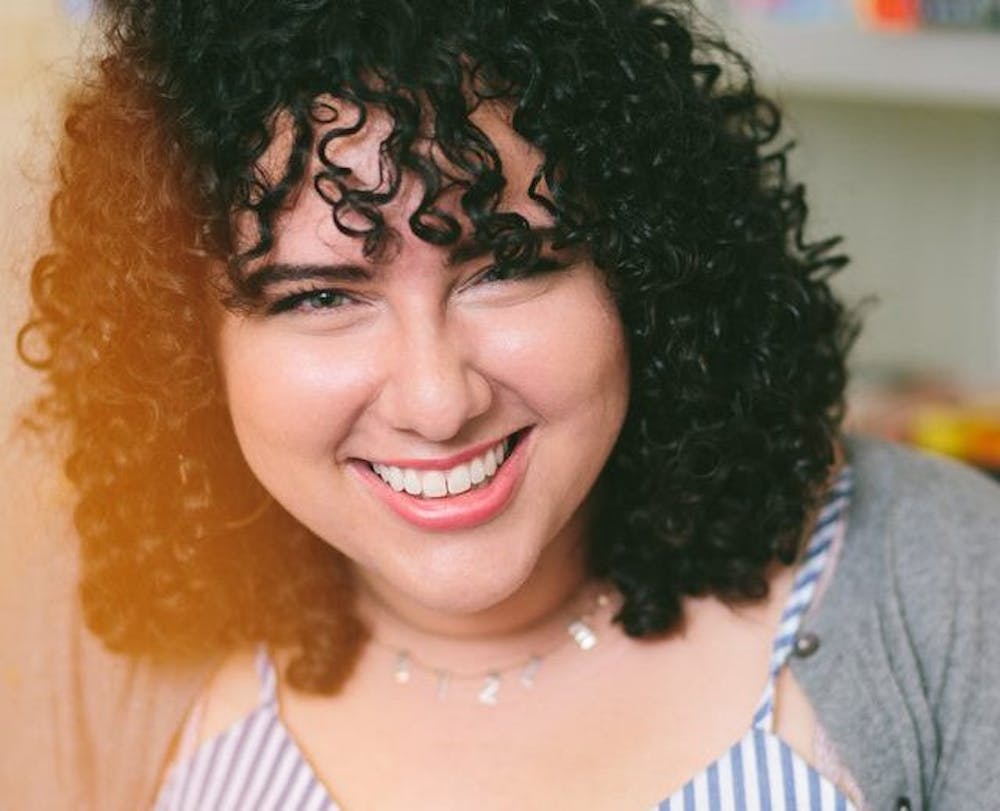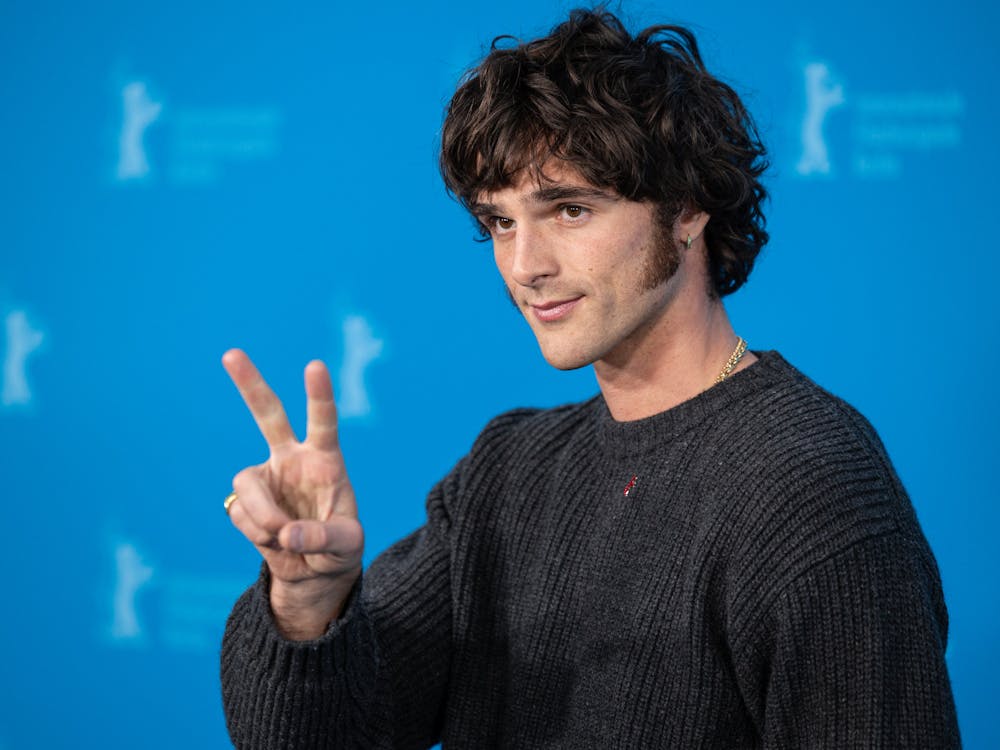On Monday, Oct. 8, my First Year Seminar — Writing with Pictures: An Introduction to Writing Picture Books and Graphic Novels — welcomed Elizabeth Lilly as a guest speaker. Lilly is a Baltimore local — a professor at the Maryland Institute College of Art (MICA) and Towson University — and both an illustrator and writer.
Lilly always thought that she was going to be an architect. One summer, she signed up for an architecture course at MICA. When the course was canceled, she was offered the opportunity to choose another course to take instead, as she had already committed to spending the summer with MICA.
“So I guess I’ll take animation,” she said she thought, with a shrug.
Lilly then proceeded to show us an animation she made that summer many years ago: a humorous clip of some grapes dancing and partying when they weren’t being surveilled by human eyes.
But that summer didn’t lead into an immediate career change from architect to artist. “Both my parents were engineers,” Lilly remarked. For her, like many others, “art was just not a real thing” — it didn’t seem like a real career pathway or future to Lilly. “So, I went to architecture school. Everything was about precision, ergonomics, design.”
There, she discovered that architecture wasn’t for her. On architecture assignments where she had to submit very technical and precise drawings, she would include doodles of small characters on or around the subjects of her work. This would prompt her instructors to ask, “What is that?” (here, the class laughed). “I was trying to be someone I wasn’t,” Lilly said.
Eventually, after a conversation with her mother about whether or not she was happy working in this field, Lilly made the decision to leave architecture school and explore new avenues in life. She thought back to the summer workshop she took with MICA and decided that she would start her new journey there. That was in 2010.
At first, Lilly was still very uncertain about her path change. “Nobody can tell you that you are an artist,” she soon realized. “You have to give yourself that permission.” She set herself on the path of animation but realized that it wasn’t exactly her area either — she loved creating characters, but not so much the tedious process of making them move. “I switched into fine arts, and I took a picture book class, and I was like, oh. This is it.”
In 2014, for a class assignment, Lilly made a book cover for a then-nonexistent book called Tall Lean Geraldine — a concept that has since been revised and published in 2018 as Geraldine, a lighthearted book about a giraffe and fitting in.
During the publication process, Lilly at times faced doubts about her writing skill, but like how she realized that to be an artist is to give oneself that permission, she told herself “if you write, you’re a writer.” In these ways, Lilly drove herself onto the path towards being a successful artist and writer, consistently reaffirming her creative identities, especially in times of doubt.
After sharing her unique path into the world of art, writing and publication, Lilly began to discuss more technical aspects of her creative process.
Lilly read three of her books to the class: Geraldine, Let Me Fix You a Plate: A Tale of Two Kitchens and Soon, Your Hands. She served as both author and illustrator for the first two books, while for Soon, Your Hands, she collaborated with an author and worked solely as the illustrator.
Each of her books had creative journeys of their own. Geraldine was the product of years of work and a lot of revision. Meanwhile, for Let Me Fix You a Plate: A Tale of Two Kitchens, Lilly sat down and finished the draft in an hour in one sitting. Since then, Lilly hasn’t gotten out any story’s concept as easily, but she half-jokingly told us that she hopes to again.
Lilly also engaged in research for Let Me Fix You a Plate: A Tale of Two Kitchens. The book is about her own biracial identity, so she visited the places close to her heart and family to gather inspiration: Florida, which was warm both in climate and character, and West Virginia which was cooler in temperature, sensation and scenery. These atmospheres made their way into her book, through the language she employed and the colors she used while illustrating it.
Thinking about her experience writing The Tale of Two Kitchens, Lilly imparted some narrative advice to the class. “[Think about] what book you did not have as a kid,” she asked us. As we considered what books or characters we might have wanted to see more of, she continued. “You are just as worthy as any superhero,” she said, which struck me. But it makes sense: Our very real human stories and the truths we find in them can mean just as much to others as fantastical narratives and their manufactured morals.
The final thing that Lilly discussed was the interesting process behind the creation of Soon Your Hands. Normally, during the picture book publication process, the illustrator and writer of the book have no contact with each other. Often, the writer doesn’t even get to see the illustrations before the book is published. However, “in this case, the agent pitched us as a package to the editor,” Lilly said, highlighting how Soon Your Hands was the rare product of a collaborative process between Lilly and the author Jonathan Stutzman.
Though Lilly and Stutzman never directly spoke to each other about the writing or illustrations, they had some indirect back and forth that resulted in both illustration and text edits.
After Lilly’s talk, the class moved onto a workshop session for our own picture book drafts, which a portion of the class will be carrying through to completion as final projects. We might even be seeing Lilly again, as she expressed interest in seeing what we end up making.
In an interview with The News-Letter, freshman Cecilia Albin talked about the value she found in Lilly’s story.
“[Her journey] resonated with me, because as a freshman in college I feel like I don't really know where I’m going to end up,” Albin said, referring to how Lilly pivoted from architecture to art.
Albin also commented on how she enjoyed Lilly’s talk in relation to our class.
“I feel like because in our class we’re all writing different stories, [Lilly is similar because she] wrote a bunch of different children’s picture books, but they were all super different from each other,” Albin said. “I thought it was cool how she had a lot of variation with age range. That's good, because there were a lot of different examples if you want to write anything similar.”
In all, Lilly imparted some really great advice and thoughts to keep in mind — ones that hold true for those involved with art and those who aren’t. There are many titles in life that you have to “give yourself [the] permission” to hold. Who’s going to stop you from saying you’re a musician, a researcher or a historian, if you’re doing the work and believe in your own value? After all, “if you write, you’re a writer.” Just don’t lose sight of what you’re doing and who you are — the first step to accomplishing a goal is just staying on track. Everything else will follow.





